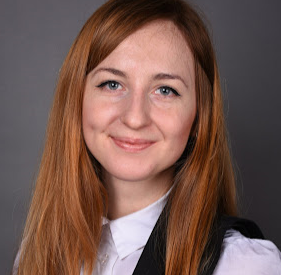PhD Defence Liudmila Fischer | Ceria-based composites for application in Oxygen transport membranes
Liudmila Fischeris a PhD student in the department Inorganic Membranes. (Co)promotors are prof.dr.ir. W.A. Meulenberg and prof.dr.ir. A.Nijmeijer and dr S. Baumann from the faculty of Science and Technology.
 Among the gas membrane separation technologies, inorganic dense membranes, like oxygen transport membranes (OTMs), are regarded as one of the most potential and promising methods and have gained considerable attention over the past decades. OTMs represent an energy-efficient and economical alternative to conventional cryogenic air separation for producing pure oxygen for oxyfuel combustion technologies as they provide high oxygen selectivity in a single-step process. Mixed ionic-electronic conductors (MIEC) are applied mostly as materials for OTMs. These MIEC ceramic materials show good performance involving both oxygen ion conductivity through the crystal lattice and electron conductivity. They can be integrated into a catalytic membrane reactor, where the oxygen is directly used by chemical reaction. Compared to diverse single-phase materials, dual-phase composite materials, i.e., pure ionic-conductor Ce0.8Gd0.2O2‑δ (CGO20) and electronic-conductor FeCo2O4 (FCO), may potentially fulfil stability requirements completely. At the low FCO fraction (<25 wt.%) in the composite, a sufficient percolation with the targeted 30 vol.% of the electronic (e)-conducting phase is achieved, thanks to phase interaction and formation to the Gd0.85Ce0.15Fe0.75Co0.25O3 perovskite phase.
Among the gas membrane separation technologies, inorganic dense membranes, like oxygen transport membranes (OTMs), are regarded as one of the most potential and promising methods and have gained considerable attention over the past decades. OTMs represent an energy-efficient and economical alternative to conventional cryogenic air separation for producing pure oxygen for oxyfuel combustion technologies as they provide high oxygen selectivity in a single-step process. Mixed ionic-electronic conductors (MIEC) are applied mostly as materials for OTMs. These MIEC ceramic materials show good performance involving both oxygen ion conductivity through the crystal lattice and electron conductivity. They can be integrated into a catalytic membrane reactor, where the oxygen is directly used by chemical reaction. Compared to diverse single-phase materials, dual-phase composite materials, i.e., pure ionic-conductor Ce0.8Gd0.2O2‑δ (CGO20) and electronic-conductor FeCo2O4 (FCO), may potentially fulfil stability requirements completely. At the low FCO fraction (<25 wt.%) in the composite, a sufficient percolation with the targeted 30 vol.% of the electronic (e)-conducting phase is achieved, thanks to phase interaction and formation to the Gd0.85Ce0.15Fe0.75Co0.25O3 perovskite phase.
The transport properties of the MIEC system are closely related to the composition and conducting properties of the individual phases in the composite, as well as microstructure features, such as density, porosity, grain size, and the presence of defects. Therefore, the objective of this work is to determine the relationship between the composition as well as the morphology and permeation properties in the fluorite-spinel ceramic composite by varying the ion- and electron-conducting materials within. Furthermore, the reduction in the thickness to µm range is an important milestone for the development of CGO20-FCO composite. Thus, the asymmetric membranes, i.e. thin membrane layer on the porous support, will be developed by using the tape casting technique.
in this work.





